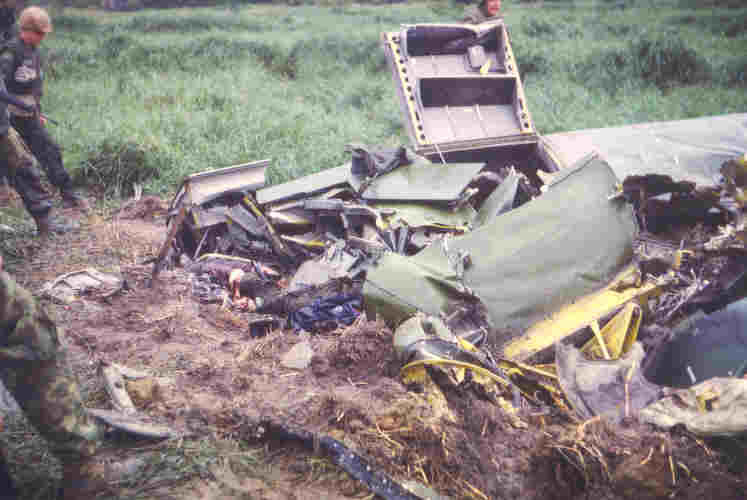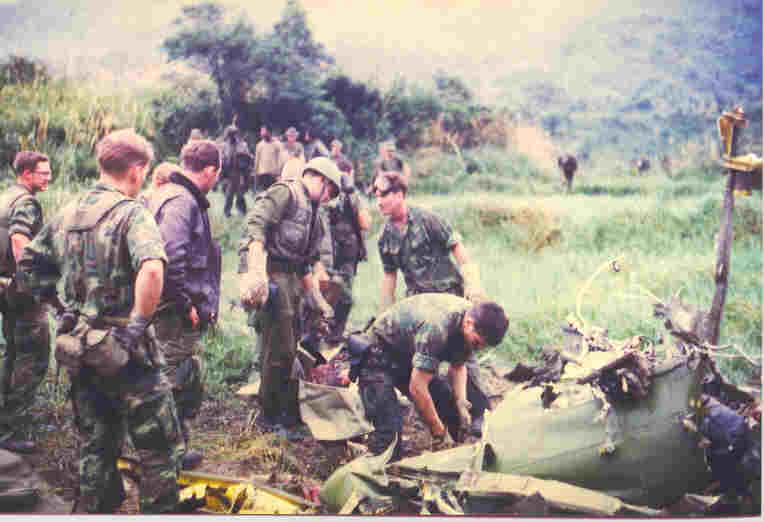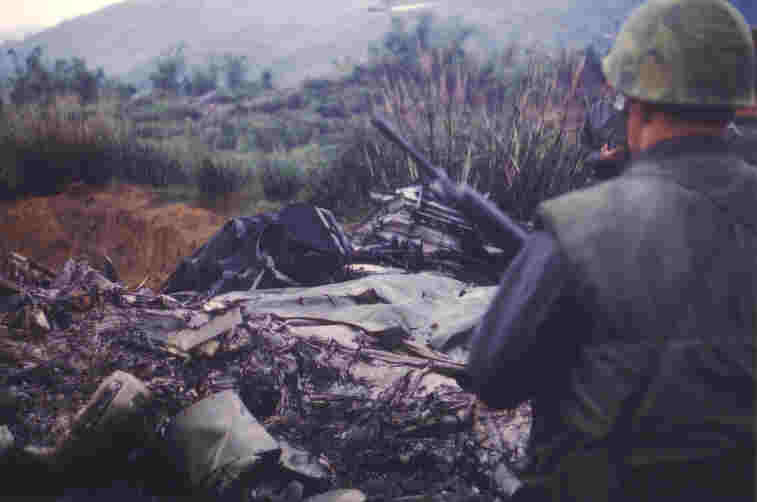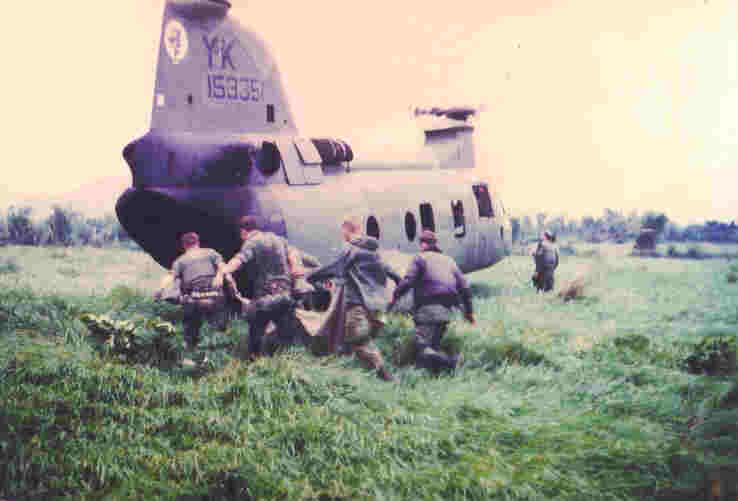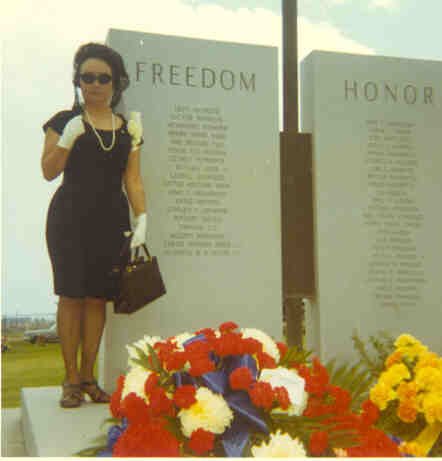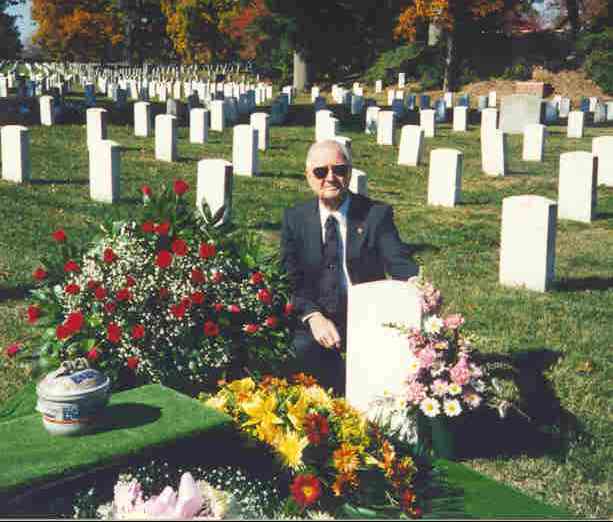The Legacy of Kenneth B. K. Kozai
(Click on photo for larger
image)
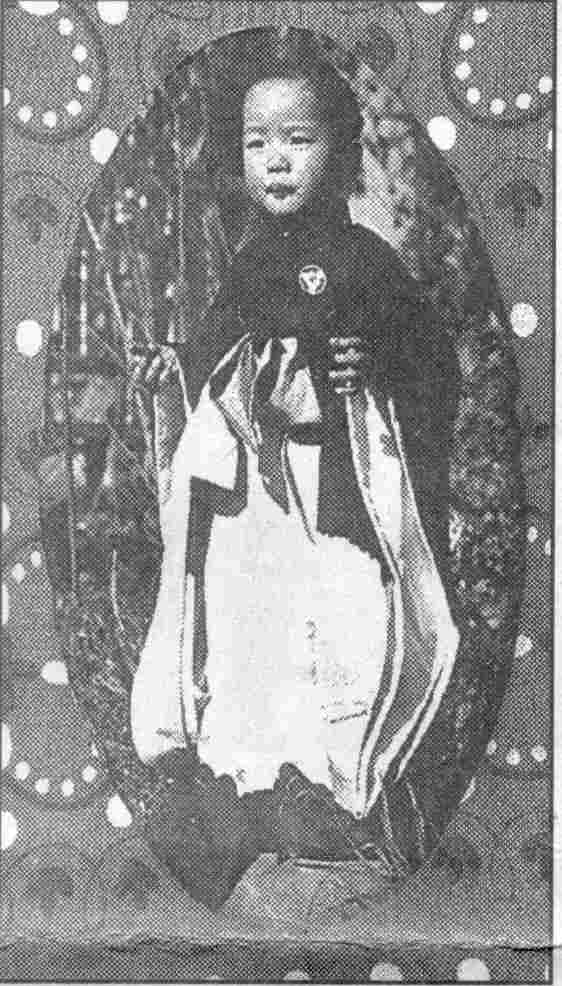 Kenneth
B. K. Kozai (photo at age two) was born October 29, 1943 in Tokyo, Japan
to Misato "Mimi" Kozai. Ken's mother had been born and educated in
the United States but at the age of 18 had moved to Japan with her parents,
and due to the "American connection", her family was constantly watched
by the Japanese secret police. Soon after Ken was born, Mimi was
divorced and upon the conclusion of WW II Mimi went to work in the Tokyo
offices of the U.S. Far East Air Force.
Kenneth
B. K. Kozai (photo at age two) was born October 29, 1943 in Tokyo, Japan
to Misato "Mimi" Kozai. Ken's mother had been born and educated in
the United States but at the age of 18 had moved to Japan with her parents,
and due to the "American connection", her family was constantly watched
by the Japanese secret police. Soon after Ken was born, Mimi was
divorced and upon the conclusion of WW II Mimi went to work in the Tokyo
offices of the U.S. Far East Air Force.
Mimi met a young airman, Tom Heard, who had enlisted
in the U.S. Army Air Corps in 1941, left the service but remained in Japan
where he sold life insurance while arranging for Mimi and Ken to come to
the United States. There was a snag however, Mimi was a U.S. citizen,
but Ken wasn't due to his natural father being a Japanese national.
Tom Heard returned to the United States and, with the help of the Japanese
American Citizens League, "walked" a bill through Congress which allowed
Ken's admission to the United States. Tom Heard greeted Mimi and
Ken in San Francisco in 1952. Later Ken became a naturalized U.S.
citizen. The Korean War prompted Ken's father to return to active
duty with the Air Force and on July 1, 1955 Tom Heard married Mimi Kozai.
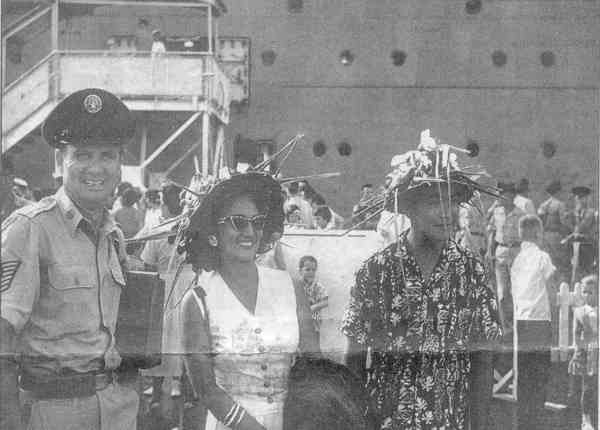 Ken,
as other military dependents, lived in various locations to include the
foreign countries of Guam (pictured with his mother and father) and Spain.
He attended high school in Omaha where his academic excellence provided
a full Navy ROTC scholarship to the University of New Mexico. It
was at the UNM that Ken met Peter G. Chronis, later to become a staff writer
with the Denver Post, who on the occasion of Memorial Day 1998 wrote an
article for the Denver Post entitled "Family And A Friend Remember Vietnam
Casualty." It is from this article that the majority of this narrative
has been extracted.
Ken,
as other military dependents, lived in various locations to include the
foreign countries of Guam (pictured with his mother and father) and Spain.
He attended high school in Omaha where his academic excellence provided
a full Navy ROTC scholarship to the University of New Mexico. It
was at the UNM that Ken met Peter G. Chronis, later to become a staff writer
with the Denver Post, who on the occasion of Memorial Day 1998 wrote an
article for the Denver Post entitled "Family And A Friend Remember Vietnam
Casualty." It is from this article that the majority of this narrative
has been extracted.
Ken's father reflected on his younger years: Ken
always referred to me as "Dad", not as my stepfather. That's the
way we always were - Dad and Son. I never considered him other than
my son. I say "stepson" now so that people 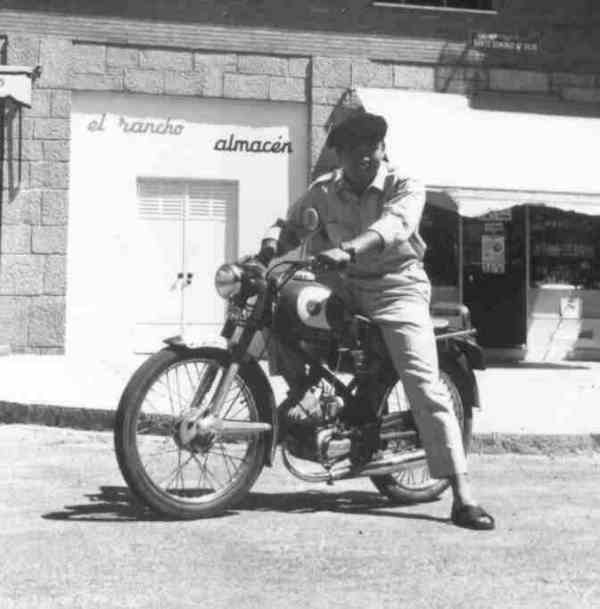 will
realize that he was pure Japanese by blood, but my deepest feelings - our
deepest feelings - were that he was my son. Growing up, Ken was just
the best kid I ever met. He was smart and funny, in fact, when he
was 5 years old he acted as my interpreter in Japan. The boy swam,
played Little League baseball and had a passion for flying model airplanes.
Ken and I had a contract relative to the model airplanes, I would build
them and he would wreck them, that's how it was. He got the adventurous
spirit from his mother. Once in Spain we bought Ken a locally made
90cc Derbi motorcycle, and the youngster rode alone all the way from Madrid
to the coast. I still laugh about Ken's "poor Japanese boy" routine.
He would affect broken English pretending that he was totally helpless
in the language, just so he could meet girls.
will
realize that he was pure Japanese by blood, but my deepest feelings - our
deepest feelings - were that he was my son. Growing up, Ken was just
the best kid I ever met. He was smart and funny, in fact, when he
was 5 years old he acted as my interpreter in Japan. The boy swam,
played Little League baseball and had a passion for flying model airplanes.
Ken and I had a contract relative to the model airplanes, I would build
them and he would wreck them, that's how it was. He got the adventurous
spirit from his mother. Once in Spain we bought Ken a locally made
90cc Derbi motorcycle, and the youngster rode alone all the way from Madrid
to the coast. I still laugh about Ken's "poor Japanese boy" routine.
He would affect broken English pretending that he was totally helpless
in the language, just so he could meet girls.
Peter G. Chronis reflects on Ken's college years:
We
rode motorcycles together. Ken was utterly fearless on his black
650cc Triumph twin. He handled his bike with great precision, making
crisp, positive maneuvers, and leaning the machine way over on turns.
If the spirit moved him, he would jump a curb for a cross country shortcut
through a park. Keeping up could scare hell out of the devil and
earned him the nickname of "Samurai Biker." In retrospect, he had
the kind of agility and good coordination required to make a good pilot.
Gregarious and a good conversationalist, Ken was also extremely hospitable,
a good cook who served guests steak teriyaki, chicken yakitori and warmed
snake. In this quiet way, he taught friends about Japanese culture.
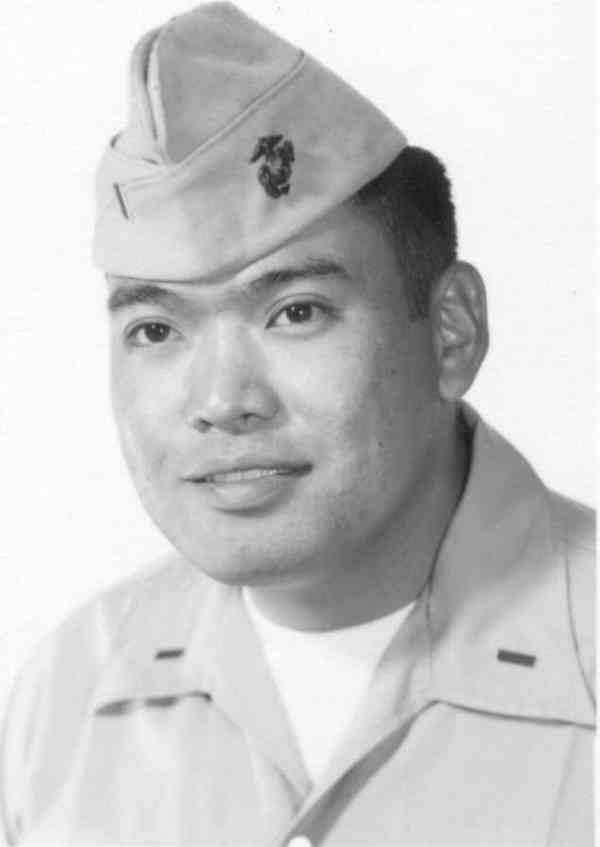 |
After graduating from the University of New Mexico,
Ken worked for the Omaha World-Herald newspaper until his induction
into active service when he chose to be commissioned a Second Lieutenant
in the United States Marine Corps. While undergoing flight training
at Pensacola, during the spring of 1968, he was designated as "student
of the week" and this picture was part of the press release announcing
the honor.
Photo by, NAS Pensacola Photo
Lab
|
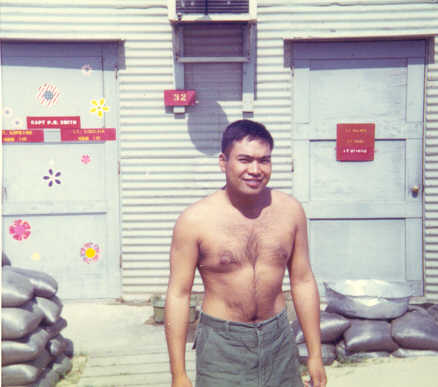 Ken
arrived in Vietnam on January 20, 1969, the
same day President Richard M. Nixon was inaugurated, and joined the "White
Knights" of HMM-165. The Nixon Administration adopted a policy seeking
to end U.S. involvement in the Republic of Vietnam either through negotiations
or by turning the combat role over to the Vietnamese. South Vietnamese
President Nguyen Van Thieu had suggested, at the beginning of the year,
that ARVN forces were "ready to replace part of the allied forces."
The Marine effort, to include the White Knights of HMM-165, in 1969 was
aimed at destroying the NVA staging and assembly areas and lines of communication
near the population centers of Dong Ha, Quang Tri, Da Nang and Quang Tri.
"The destruction of the enemy's command, control and logistic facilities
will contribute to his eventual defeat." Nixon's troop withdrawal
plan began on 14 Jul with BLT 1/9 leaving for Okinawa. One month
later Ken and the "White Knights" of HMM-165 were aboard the USS Valley
Forge, headed out of harms way to Okinawa, as the first 1st Marine Aircraft
Wing unit to depart Vietnam under Nixon's Vietnamization program.
Ken had served six days less than seven months in Vietnam.
Ken
arrived in Vietnam on January 20, 1969, the
same day President Richard M. Nixon was inaugurated, and joined the "White
Knights" of HMM-165. The Nixon Administration adopted a policy seeking
to end U.S. involvement in the Republic of Vietnam either through negotiations
or by turning the combat role over to the Vietnamese. South Vietnamese
President Nguyen Van Thieu had suggested, at the beginning of the year,
that ARVN forces were "ready to replace part of the allied forces."
The Marine effort, to include the White Knights of HMM-165, in 1969 was
aimed at destroying the NVA staging and assembly areas and lines of communication
near the population centers of Dong Ha, Quang Tri, Da Nang and Quang Tri.
"The destruction of the enemy's command, control and logistic facilities
will contribute to his eventual defeat." Nixon's troop withdrawal
plan began on 14 Jul with BLT 1/9 leaving for Okinawa. One month
later Ken and the "White Knights" of HMM-165 were aboard the USS Valley
Forge, headed out of harms way to Okinawa, as the first 1st Marine Aircraft
Wing unit to depart Vietnam under Nixon's Vietnamization program.
Ken had served six days less than seven months in Vietnam.
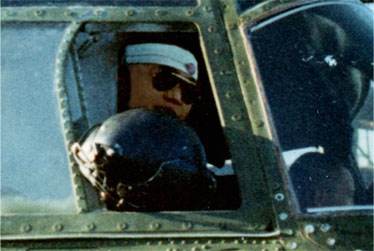 On
the morning of 17 August Ken had manned his aircraft on the flight deck
of the USS Valley Forge, or the "Happy Valley" as some called her, in preparation
to offload the squadron to MCAS Futima. Ken was boldly displaying
his heritage with the traditional Samurai Warrior head band as he waited
for the command to start engines. The head band had become Ken's
trade mark when flying combat missions in Vietnam. John Dullighan,
a Boeing Technical Representative to HMM-165, who took the picture of Ken
on the "Happy Valley" provides his memories of Ken.
On
the morning of 17 August Ken had manned his aircraft on the flight deck
of the USS Valley Forge, or the "Happy Valley" as some called her, in preparation
to offload the squadron to MCAS Futima. Ken was boldly displaying
his heritage with the traditional Samurai Warrior head band as he waited
for the command to start engines. The head band had become Ken's
trade mark when flying combat missions in Vietnam. John Dullighan,
a Boeing Technical Representative to HMM-165, who took the picture of Ken
on the "Happy Valley" provides his memories of Ken.
I remember Ken quite well. He was hard to
forget, always doing the wildest things, like throwing a bunch of firecrackers
behind a bunch of us, in a side street in Futema, the night we arrived.
We were on a 'cultural' inspection of the museums in 'the ville.'
The firecrackers sounded just like small arms fire, especially in the confined
space. We all dived for cover, instinctively, and came up covered
in mud and dust to see Ken laughing his head off. When we got over
the overpowering urge to strangle him, it seemed pretty funny. Okinawa
seemed a paradise after Vietnam.
It is my understanding, though I don't know for
sure, that Ken volunteered to return to Vietnam. (I know I
told my Mother I was ordered to do many of the things I volunteered
for. "They made me do it, Mom.") I know he was bored in Okinawa,
he considered the restrictions to be stupid, how can you train properly
if you don't train like you fight.
Ken returned to Vietnam in either late October or early
November and was assigned to HMM-364. Shortly thereafter he was subjected
to a rigorous check ride administered by LtCol. Dunbaugh, the squadron's
commanding officer, who found him totally capable of serving the "Purple
Foxes" as an aircraft commander. On Saturday, November 29,
1969 Ken was the pilot of a medical evacuation mission tasked with evacuating
a seriously wounded Marine somewhere south of LZ Ross. The crash
of YK-9 was the result of the failure of the synchronization shaft running
between the forward and aft transmissions. This allowed the intermeshing
rotor blades to make contact with each other shearing them off while the
aircraft was in flight. The total destruction of the aircraft made
it extremely difficult to determine if the synchronization shaft failure
was due to direct enemy action or simply a mechanical failure. When
the wreckage was returned to Marble Mountain Air Facility, the squadron's
Executive Officer, Major Jack Pipa, spent hours examining the wreckage
and determined a 50cal (or Russian 51cal) round had entered the bottom
of the aircraft, continued through the radio cabinet behind the cockpit
and then striking the synchronization shaft causing it to fail.
Recovery crew at the crash site, and Ken plus six others take
final CH-46 ride to Da Nang.
John Dullighan's memories continue: I also
remember how proud Ken was of his Japanese heritage, still not the most
popular of stances at the time. Ken couldn't have cared less and
took any chance he could to explain Japan to the rest of us. It was
a sad moment for us when we heard he had been killed, possibly a "blue
on blue or friendly fire" incident. I would not have been surprised
that he was killed, given the way he aggressively flew the aircraft.
He could fly a "buttonhook" approach tighter than anyone I ever flew with.
But it seemed ironic that he, of all people, was shot down by "friendly
fire" which was the rumor in circulation at the time. But at the
time I supposed it didn't really matter, you are just as dead and you were
serving your country, either way. I have very fond memories of Ken,
he was an unforgetable charachter and I was very sad when he was killed,
as were others in HMM-165. I understand now that it was not "friendly
fire" that brought the aircraft down. There was a flurry of activity
from Boeing, since they were concerned that the "de-sync" could have been
caused by a transmission problem but they found the transmissions to be
intact. There had never been any problems, before or since, with
the transmission shaft.
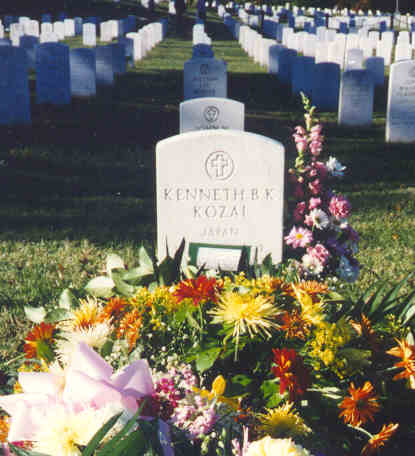 The
last time Ken talked to his parents was in October of 1969. He was
in Okinawa and had informed his parents that he had decided to go back
to Vietnam. "He told us he really wanted to go back," Mr. Heard said,
"I often kick myself for not trying to talk him out of it." A few
weeks later, Ken's ex-wife called Heard at work to tell him Ken had
died. "So I drove home and told my wife, and she just collapsed,"
Heard said. "The bottom just fell out for me." Ken's body was
taken to Arlington National Cemetery and buried in a plot that Mr. Heard,
a retired Air Force captain, had reserved for himself and his wife Mimi.
The
last time Ken talked to his parents was in October of 1969. He was
in Okinawa and had informed his parents that he had decided to go back
to Vietnam. "He told us he really wanted to go back," Mr. Heard said,
"I often kick myself for not trying to talk him out of it." A few
weeks later, Ken's ex-wife called Heard at work to tell him Ken had
died. "So I drove home and told my wife, and she just collapsed,"
Heard said. "The bottom just fell out for me." Ken's body was
taken to Arlington National Cemetery and buried in a plot that Mr. Heard,
a retired Air Force captain, had reserved for himself and his wife Mimi.
On or about May 30, 1970, Ken's name was added to a
memorial, in the Fairmount Cemetery honoring all Nisie or Japanese Americans
who were born in the U.S. and gave their lives defending our country.
However, Ken was actually an Issei, pure Japanese born in Japan.
Fairmount Cemetery is located in Denver, Colorado. Ken's mother,
Mimi, is pictured below next to the monument which displays his name
as the last entry.
Misato Kozai "Mimi" Heard died on July 1, 1994 and
was cremated. Tom Heard made the proper arrangements with Arlington
National Cemetery and on October 28, 1994 the obverse side of Ken's gravestone
had been engraved with his mother's name and her ashes were laid to rest
with her son. The inscription on her memorial funeral brochure stated,
"
. . . and we are now truly together again for eternity; my beloved son,
KENNETH B. K. KOZAI, 1st Lt., USMC, and me . . ."
Mimi Heard
Tom Heard and Mimi's Internment
The Denver Post article of May 25, 1998 continues;
Ken had two children from a previous marriage, Tom the eldest, and Travis
who is one year younger.
Travis, a police officer in Chandler, Arizona related,
"I
never knew my dad. Everything I knew about him I learned from my
grandparents and my mother. As a child I dreamed about him all the
time. What I wanted to be was a pilot which didn't actually work
out, but I always had that military desire - patriotism, I guess.
He had quite a bit to do with that. I knew that my father had died
in Vietnam and that he was a hard charger. The thing I admire most
about him was his never-ending spirit. His 'do everything he could
possibly do' attitude. It was tough growing up without a dad, I wish
every day he had been there, just for guidance and whatnot. I'd give
anything to sit down and talk to him for an hour. On special days,
such as Memorial Day, Veterans Day and dad's birthday, I contemplate what
might have been.
Like his father, Travis once rode motorcycles, he still
owns the one his father rode in Spain and pictured above. Travis
also served seven years with the Navy as a radar operator.
Tom, who works for an Olive Garden restaurant in Albuquerque,
New Mexico related, "After Mimi's death Travis and I received some of
dad's personal items. We read his flight logs and found out he had
been shot down twice and accounts of how he walked back through the jungle
at night. I've often tried to imagine what dad was like, I look at
my brother and myself, and the things we do, and think they're kind of
like the things he did. Now, as I look back on my childhood, I know
there was definitely something missing. I didn't notice it back then.

A Rubbing of "The Wall" Panel 15W - Row 005
Kenneth B. K. Kozai's life went full cycle, beginning
and ending in Asia.
Information provided by:
Peter G. Chronis, Staff Writer
for the Denver Post
Denver Post edition of May 25,
1998
John Dullighan, former Being Tech.
Rep. to HMM-165
Kathleen Phillips, Kenneth Kozai's
former wife
Charles R. "Chuck" Dunbaugh, LtCol.
USMC (Ret)
Franklin A. "Uncle Frank" Gulledge,
Jr., Maj. USMC (Ret)
Images provided by:
Denver Post edition of May 25,
1990;
a.
Ken Kozai at age two
b.
Ken Kozai with his parents in Guam
c.
A Rubbing of "The Wall" Panel 15W - Row 005
Kathleen Phillips;
a.
Ken Kozai and his 90cc Derbi motorcycle
b.
Ken Kozai (bare chested) at Marble Mountain Air Facility
c.
Ken Kozai's tombstone at Arlington National Cemetary
d.
Mimi Kozai Heard at veterans memorial
e.
Tom Heard and Mimi's internment
John Dullighan;
a.
Ken Kozai manning aircraft aboard the USS Valley Forge
Franklin A. Gulledge, Jr.;
a.
Pictures of the YK-9 crash site (4)
LAST UPDATED: AUGUST 6, 2000
Back Browser or Home
-
 Kenneth
B. K. Kozai (photo at age two) was born October 29, 1943 in Tokyo, Japan
to Misato "Mimi" Kozai. Ken's mother had been born and educated in
the United States but at the age of 18 had moved to Japan with her parents,
and due to the "American connection", her family was constantly watched
by the Japanese secret police. Soon after Ken was born, Mimi was
divorced and upon the conclusion of WW II Mimi went to work in the Tokyo
offices of the U.S. Far East Air Force.
Kenneth
B. K. Kozai (photo at age two) was born October 29, 1943 in Tokyo, Japan
to Misato "Mimi" Kozai. Ken's mother had been born and educated in
the United States but at the age of 18 had moved to Japan with her parents,
and due to the "American connection", her family was constantly watched
by the Japanese secret police. Soon after Ken was born, Mimi was
divorced and upon the conclusion of WW II Mimi went to work in the Tokyo
offices of the U.S. Far East Air Force.





